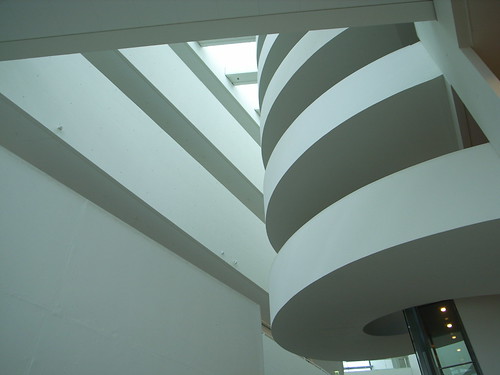Here are the slides (3.32Mb) of my talk at Geoware called "The user experience of location-awareness", a very thoughtful event I've been invited to as a speaker by the Innovation Lab. Thanks Ander Morgensen, Christian Lausten and Peder Burgaard for the gig! The talk was basically a discussion about how multi-user location-aware applications have troubles reaching a more mature market. Starting from s-curves showing side-by-side the evolution of navigation systems (Garmin, TomTom) and location-aware apps, I described how the former are now well established and used by a large number of persons, whereas the latter still has trouble finding its market. The s-curves depicted different "waves" of locative systems, and stated how we're in a sorta disillusion phase (as represented on the Gartner Hype Cycle). This led me to show different quotes form trend reports that keeps postponing this ideal proximal future of powerful mososo.

Based on my phd research, talks and side experiences, my point was to show 6 problems that makes these applications developed by academic labs or start-ups failed: 1) Privacy issues 2) Lack of critical mass of users (cluster effect) 3) The belief in robust, seamless and perfect infrastructures 4) Bad user interfaces (on mobile devices, plus the fact that maps are difficult to read anyway) 5) Bad user experience (not conveying intentions, lack of granularity, mismatch between people's representation) 6) Bad integration in people's practices and context
Playing the party pooper so far, I tried to not dismiss location-awareness but rather bring 5 relevant avenues that we can take as opportunities (and not direct solutions to the problem cited before): 1) Assist, not automate: in terms of privacy what people do not like is the feeling to be seen without the ability to see (Jeremy Bentham’s Panopticon) as Michel Foucault argued. BUT people are OK to disclose things when they can control what they see and when they can see others (the masquerade). 2) Seamful design (Matthew Chalmers): reveal the “seams” (limits, boundaries, uncertainties), provide opportunities to show the imperfections, can be used a trick to lie. 3) Beyond GIS information (Kevin Slavin): “Location is more than GIS information” 4) History matters: the asynchronous character of location-awareness have an added value and can be used to create conversations AFTER the events (comments). 5) Beyond humans: we can think about applications for other beings such as animals (blogging pigeons) or to create new connections between the physical environments AND the digital worlds
The picture shows the conference venue, ARoS, the Arhus Kunstmuseum.
